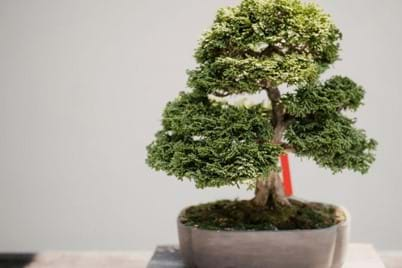
In general heat and a lack of rain dries out the soil and scorches plant material – so here are 7 tips to help your garden survive the heat:
1. Be prepared
Keep an ear out for the weather reports and, if heatwave conditions are predicted, take some simple precautions. Apply as much water as you can in the evening or morning before the temperature rises. Take special care of potted plants and young seedlings. Erect some temporary shade or spray Yates® Waterwise™ DroughtShield onto very vulnerable plants. Yates® Waterwise™ DroughtShield is a polymer layer that provides protection from heat, salt, wind and water loss.
Temporary shelters made from shade cloth or even a beach umbrella erected to shield vulnerable plants can help them through the worst of the heat wave.
Watch this video to see how Yates Waterwise™ Droughtshield works:
2. Potted Plants
Move potted plants into a shaded area and water them well. During heat waves, it's OK to keep pot saucers filled with water, as the plants can draw on that water over the day.
3. Water effectively
Start by checking to see if you really do need to water. Your finger makes a terrific in-built moisture-testing device. Push your finger through the mulch layer and check to see if the soil is moist. If it feels dry, it's definitely time to water. Try to apply enough water so that it penetrates into the root zone. Short, surface waterings only encourage the roots to stay near the surface where they're more likely to heat up and dry out in the next heat wave.
Avoid watering with a hose nozzle that delivers a strong jet that gouges holes in the soil. Instead, choose a sprinkler or a water wand that delivers a gentle shower and allows the water to land gently with minimal disturbance.
An application of Yates® Waterwise™ Soil Wetter around the root zone in garden beds and also on potted plants will help get water where it's needed by breaking down the waxy water repellent layer that can develop on soil surfaces and potting mix.
4. Mulching
Mulching on top of pots and garden beds is said to significantly lengthen the period of time between waterings. Choose the type of mulch that suits your garden style. For example, pebble mulches look good with modern gardens filled with structural plants. And pebble mulches can be surprisingly effective. They keep the soil cool and allow the water to easily penetrate through to the roots. They last a long time, too.
Organic mulches suit natural-style gardens. It's best to have a mix of particle sizes in an organic mulch so that the water and air can easily penetrate. If particles are too big, the mulch and the soil will dry out too quickly. Too small, and the mulch itself can create a barrier.
One major plus for organic mulches is that, as they break down, they blend into the soil and, over time, improve it.
5. Water storing crystals
Water crystals absorb and hold moisture. The best way to use them is to pre-soak them in water (they'll swell to many times their original size) before digging the swollen crystals into the planting hole. Never put the crystals on top of the soil. If you do, they'll suck moisture out, rather than helping to keep it in.
6. Create acts of kindness
If your neighbour is away and/or unable to tend to their garden. Whilst watering your own garden be sure to offer up some water to their garden and plants too. A kind act that hopefully will be returned to you one day too.
7. Revitalise your plants when it cools down
Once the temperature drops below 30 degrees, give your plants a gentle feed with organically certified Yates® Dynamic Lifter® Liquid Concentrate







